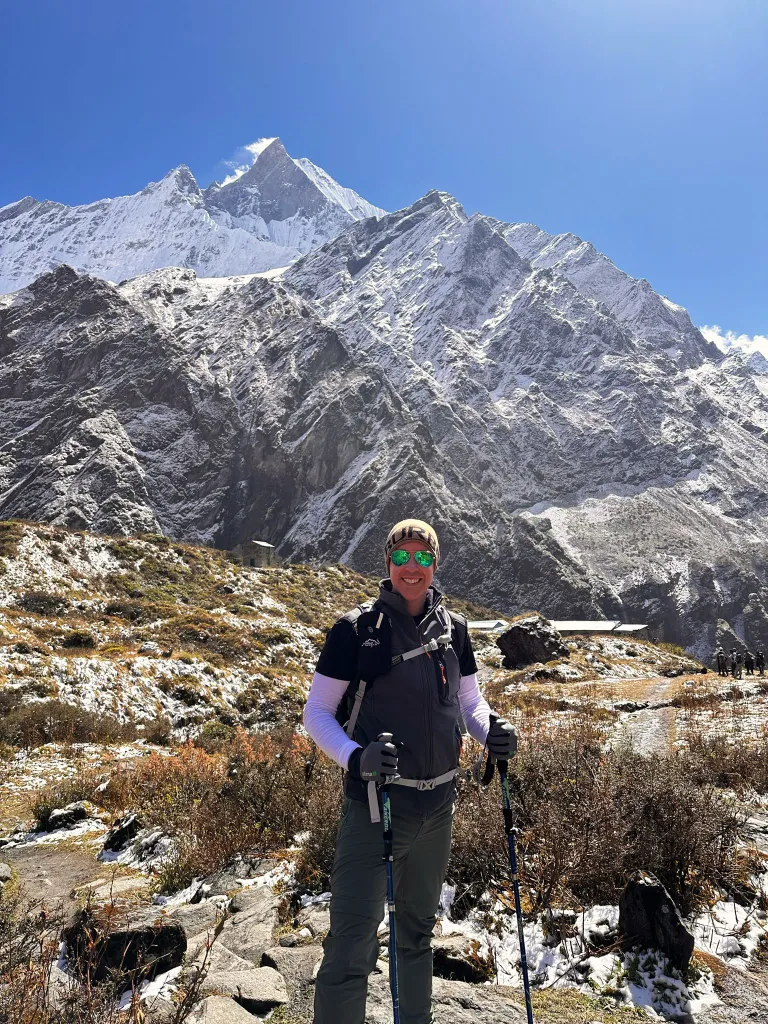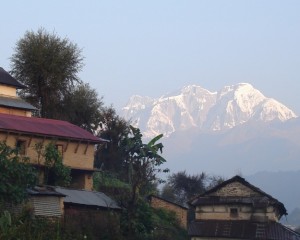Can a Beginner Do Annapurna Circuit?
Among the classic trekking routes of Nepal, the Annapurna Circuit Trek is one of the most famous. Many trekkers, whether beginners or experienced, want to explore the gem of the Annapurna region, wrapped in the arms of towering peaks.
The journey begins from the subtropical landscape of the lower region of Jagat. The following days mark the start of your trekking journey, passing through lush forests, undulating hills, and cascading waterfalls. Along your journey, you are greeted with alluring views of the majestic peaks of the Annapurna Massif (Annapurna I-IV), Dhaulagiri, Machhapuchhre, Manaslu, Gangapurna, Tilicho Peak, Pisang Peak, and Paungda Danda.
In addition, the beautiful monasteries, spinning prayer wheels, and flying chortens add an extra touch of Tibetan culture to the trail. While it is a once-in-a-lifetime adventure, many trekkers have questions about whether beginners can do the Annapurna Circuit Trek.
Well, the trek is an adventurous activity, and the trail of the Annapurna Circuit is moderately difficult. But with proper preparation, even a beginner can embark on the journey. How about you stay with us for a moment, as we will clarify all the information regarding the Annapurna Circuit Trek to help you make careful preparations for your next adventure?
Is the Annapurna Circuit difficult?

Due to the altitude and terrain, the Annapurna Circuit Trek is moderately difficult for trekkers. The landscape transitions gradually as you climb through the subtropical scenery to a Tiebtean-influenced valley standing in the lap of the high Thorong La and then to the Kali Gandaki valley, a desert-like Trans-Himalayan region. Interestingly, it was once a vital trade corridor to Tibet.
Let us get to know about its terrain, distance, and altitude to understand the difficulty of the Annapurna Circuit Trek.
Altitude
The trail of the Annapurna Circuit Trek takes you from 1300 m altitude to over 5000m from sea level, so it is understandable that the significant altitude gain is a challenge for the beginner. The elevation gain can result in altitude sickness. Symptoms like nausea, vomiting, and shortness of breath are common in this condition. In a serious situation, it can cause severe dehydration that requires medical attention.
To tackle this, you have to implement the proper acclimatization strategy and maintain a slow pace. Likewise, you should take medicine like Diamox to deal with the early symptoms of altitude sickness.
Terrain
The undulating landscape of the Annapurna Circuit is a blend of rugged paths, steep inclines, and rocky sections. The two-week journey through the challenging landscape is a bit strenuous. You have to walk 15 km on uneven trails regularly.
The best way for a beginner to deal with this terrain is to have good physical fitness. While prior trekking experience can help yet you can navigate the trail even if you do not have the experience
Acclimatization and Walking distance
The trail covers approximately 230 km, and you have to walk for 6-7 hours regularly. A beginner can find it hard to walk a long day on these uneven terrains.
Acclimatization is a must to help your body adjust to the altitude and terrain. However, many trekkers tend to hurry their journey and ignore the importance of acclimatization. The professional guide from Nepal Vision Trek highly recommends the proper acclimatization strategy for both beginners and experienced trekkers.
What level of fitness is required for the Annapurna Circuit?
Good physical condition is essential for trekkers, whether beginners or experienced. When we say good physical condition, we mean both physical and mental health, as both impact the trekking journey.
Physical Fitness
You have to walk alongside the strenuous landscape for more than two weeks, so your body has to tackle these physical challenges. You must prepare for this by initially starting with long walks on the staircase. Then, include the proper strategy of strength training and cardio in your fitness routine. With the proper training regime, your body will have the capacity to deal with the uneven terrain of the Annapurna Trail. Besides, you should be involved in short hiking or trekking routes in your nearby areas to gain the proper experience for trekking. Trust us; this experience can help you a lot in your journey.
Mental Health
In your travel journey, your mental health also plays an important role. Travelers with a positive attitude can tackle the physical terrain and undulating landscape. Moreover, there can be times of unexpected weather changes that may influence your itinerary. In such situations, your positive attitude can help you remain calm. To maintain good mental health for trekking, always stay positive and try to explore the amazing natural wonders and cultural treasures as rewards to help you develop better preparation for the trek.
Best Time To Trek Annapurna Circuit Trek

Beginners planning to head to the Annapurna Circuit Trek may find it feasible to explore the trail at the best time, as this time rewards with clear visibility, comfortable weather, and proper trail conditions.
Spring and autumn are the best times for trekking. While summer and winter are charming by nature, they are not suitable for trekking.
Spring
The breezy weather and nature welcome a vibrant atmosphere, transforming it into its best self. The green landscape, the active season for diverse fauna, and the sharp visibility of the towering peaks are features of the spring season.
Aside from that, the season is known for long days and comfortable weather, perfect for beginners to explore the trekking region more easily. The only issue is that late spring brings rainfall, which can obstruct trail conditions and visibility, so it is better to embark on the trek in the early or mid part of the season.
Autumn
After the heavy rainfall, the landscape regains its beauty, and the weather becomes more comfortable. This is what autumn looks like. Besides, the lively atmosphere and festive season along the trail make it even more exhilarating.
It is one of the peak seasons, so it is better to book the trek in advance to avoid the crowds. For a more solitary experience, you can book the trek at the end of the season.
To wrap up, the Annapurna Circuit Trek is a once-in-a-lifetime opportunity to experience the serene environment of the Annapurna region. At the same time, you get the alluring experience of the architectural wonders of the region.
With proper planning and preparation, even a beginner can do the Annapurna Circuit Trek. For expert guidance and advice, feel free to reach out to Nepal Vision Trek.
FAQ






